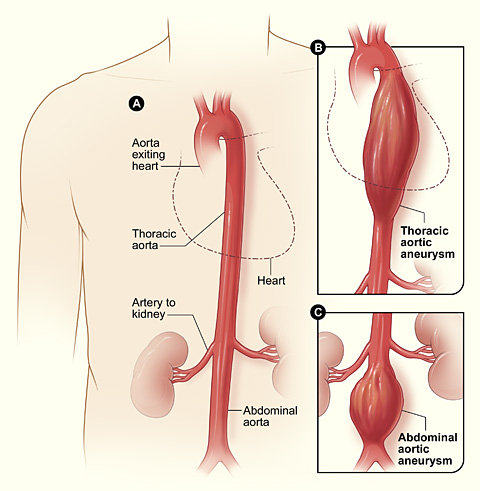
Abdominal Aortic Aneurysm
The aorta is the major blood vessel that supplies blood to the body. An abdominal aortic aneurysm (AAA) is an enlarged and weakened area in the lower part of the wall of the aorta. A normal aorta is approximately one inch or less in diameter and it runs from the heart passing through the center of the chest and abdomen. In general, aneurysms can develop anywhere along the length of an aorta. Aneurysms in the upper part of the aorta are called thoracic aortic aneurysms. But, aneurysms are more common in lower parts of an aorta and called as abdominal aortic aneurysms. These aneurysms may also be referred to as AAA or triple-A.
An aneurysm can grow to be more than five inches in diameter. Due to a high pressure of blood flowing through the artery, the weakened area enlarges like a balloon. It is more common to see large aneurysms bursting as compared to the smaller ones.
This results in internal bleeding that can lead to death unless treated immediately by an experienced cardiovascular surgeon. AAAs are considered a serious health condition because they can burst or rupture. Only about half of patients with a ruptured AAA who get to a hospital survive. Treatment of AAA may vary from watchful waiting to emergency surgery depending on the size and rate at it is growing. Once a diagnosis of AAA is made, doctors will closely monitor it so that surgery can be planned if it’s necessary. It is very risky to wait for surgery until the time AAA ruptures.


